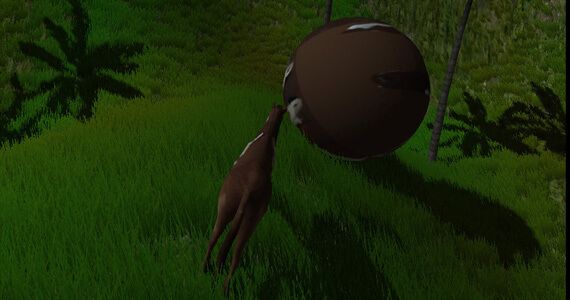Markus 'Notch' Persson has been out of the public limelight for some time now. Having duly achieved fame for his creation of Minecraft, the Swedish independent developer has done little else on the release front since handing the reigns over to his Mojang right-hand Jens Bergensten and giving up on development of space-based 0x10c.
This week however, he announced the launch of the first PC game he has fully developed since Minecraft, and this new game features a horse pushing a ball around cliffs. Creatively, it's called Cliffhorse.
Cliffhorse was released this week completely for free, and is available for download here. Users can opt into a pay-what-you-want system via dogecoin, a bitcoin alternative many hopeful currency enthusiasts are declaring on the rise. Like his other personal creations, Notch offered 'no guarantee of future updates', meaning if he gets bored of the game he can just throw into the shadows and move on to the next project.
The 'early-access' game is very bare so far, featuring a brown horse that gamers control. They can trot around the hillside and push around a ball which seems to resemble a similarly-colored brown spotted cow. Much like Minecraft, there's no set objective. Unlike Minecraft, there seems to be really only one thing to do in the game - and that's rolling the ball. Perhaps a future update will make the ball more katamari-like?
[HTML1]
When Notch was last under the spotlight, it was because he announced he was indefinitely postponing the development of 0x10c because he had 'weird creative block'. While he's tinkered with different java competitions and made public appearances, he hasn't had any major contributions to Mojang since helping out with Scrolls, and the $100 raised so far from Cliffhorse via dogecoin paints the picture that it may not be a cult hit.
What do you think, Ranters? Does Cliffhorse have any potential to be a fun game, or would you like to see Notch work on something else?
______
Follow John Jacques on Twitter @Makelevi.
Source: Polygon

